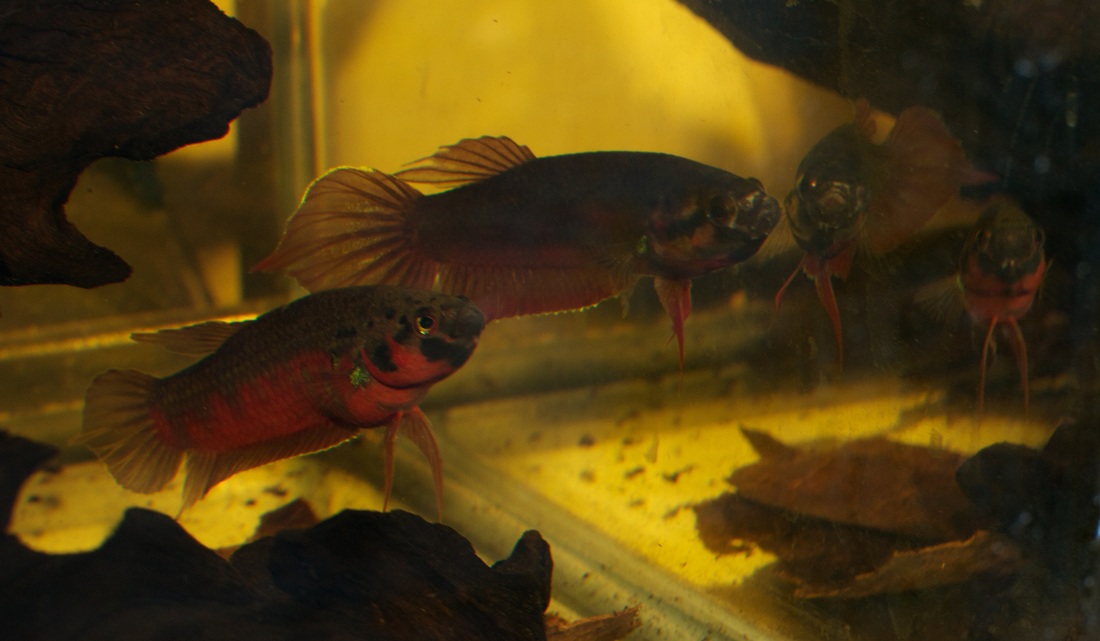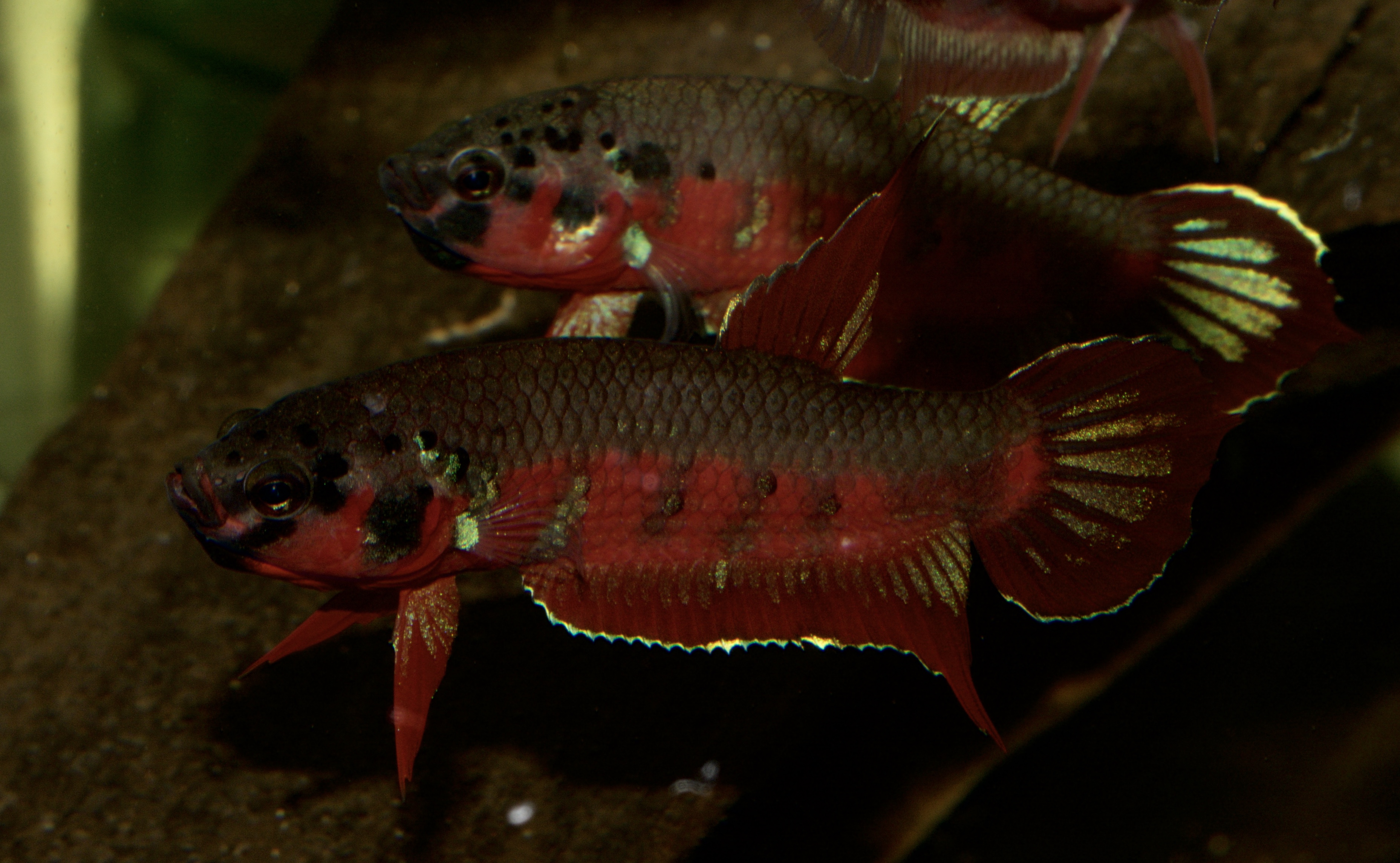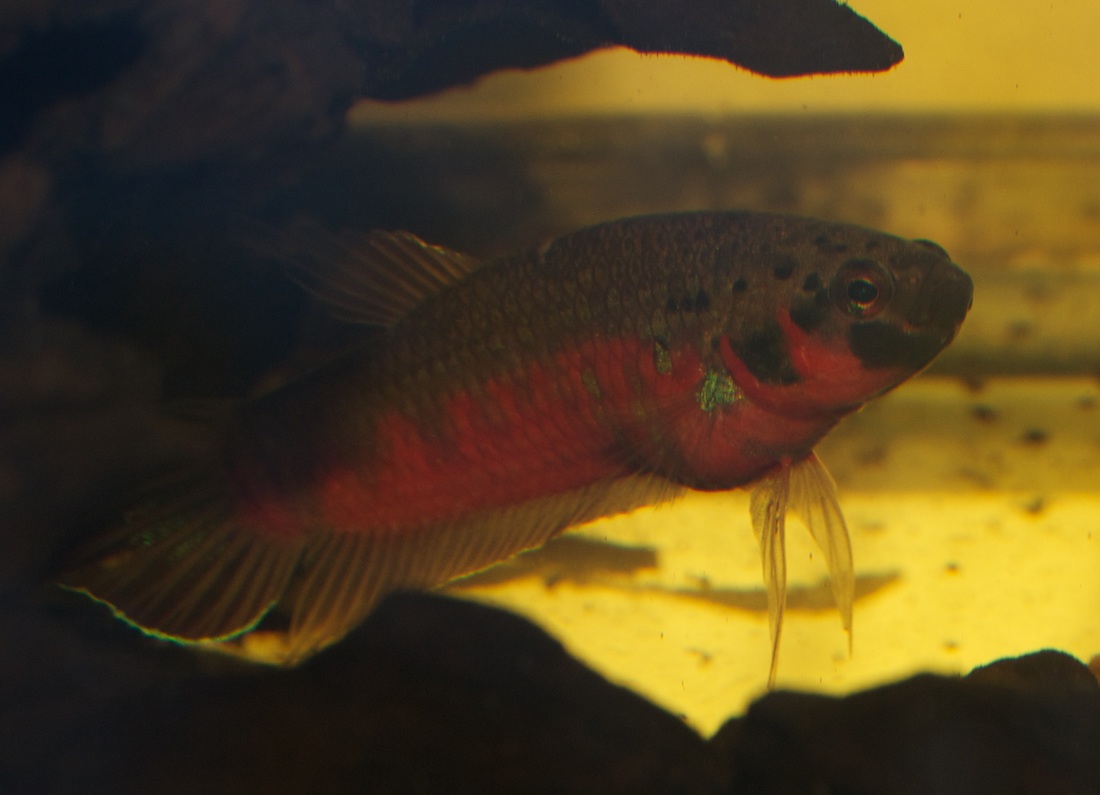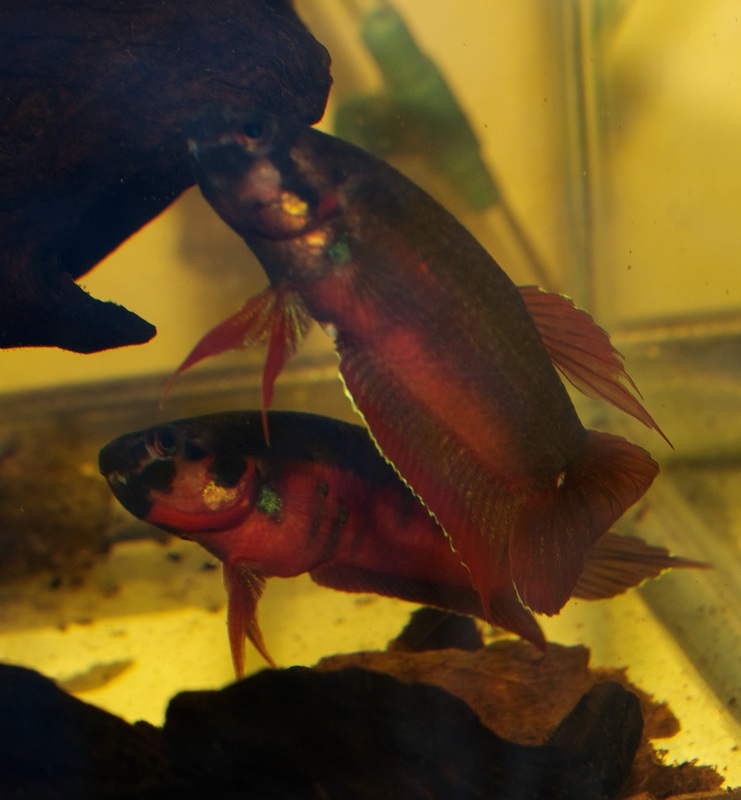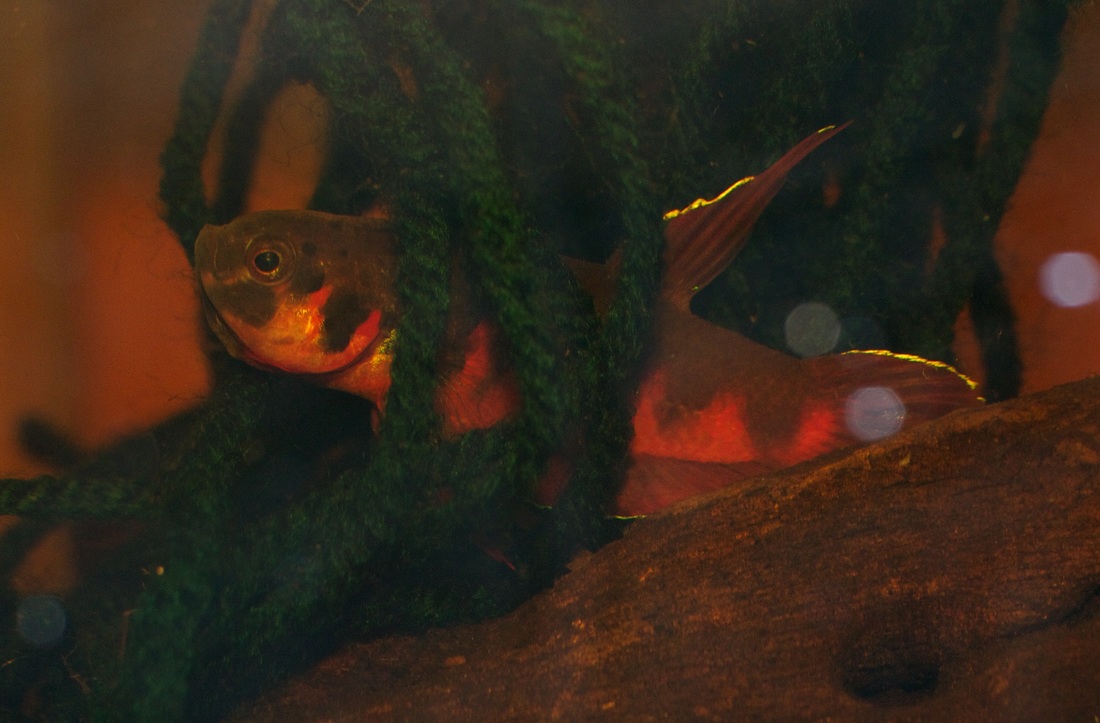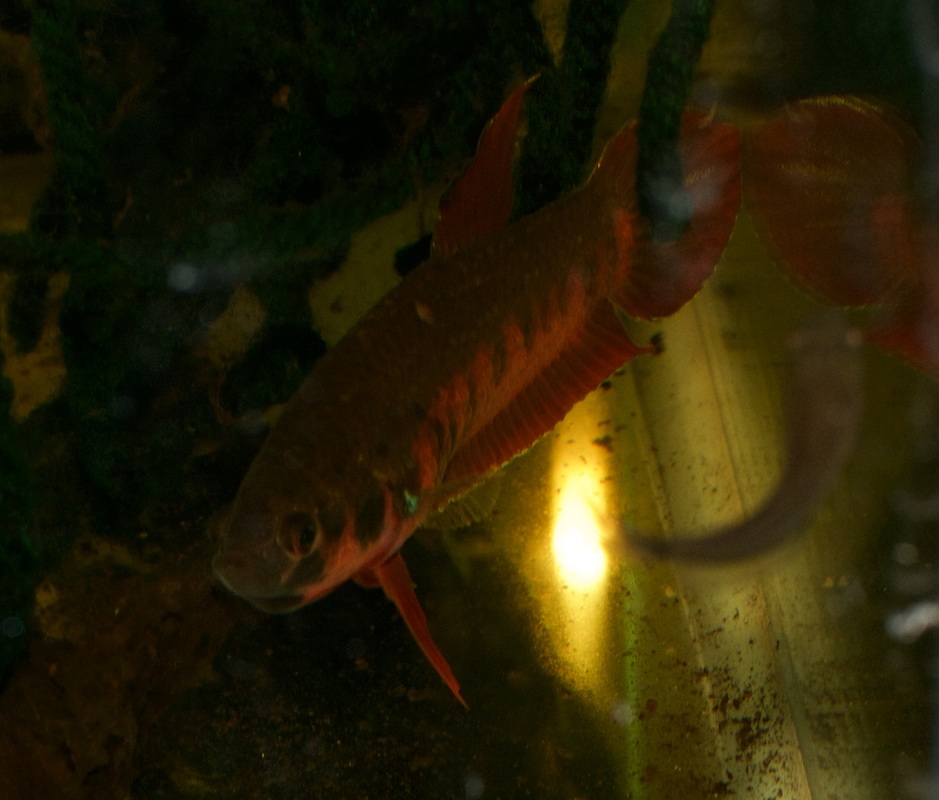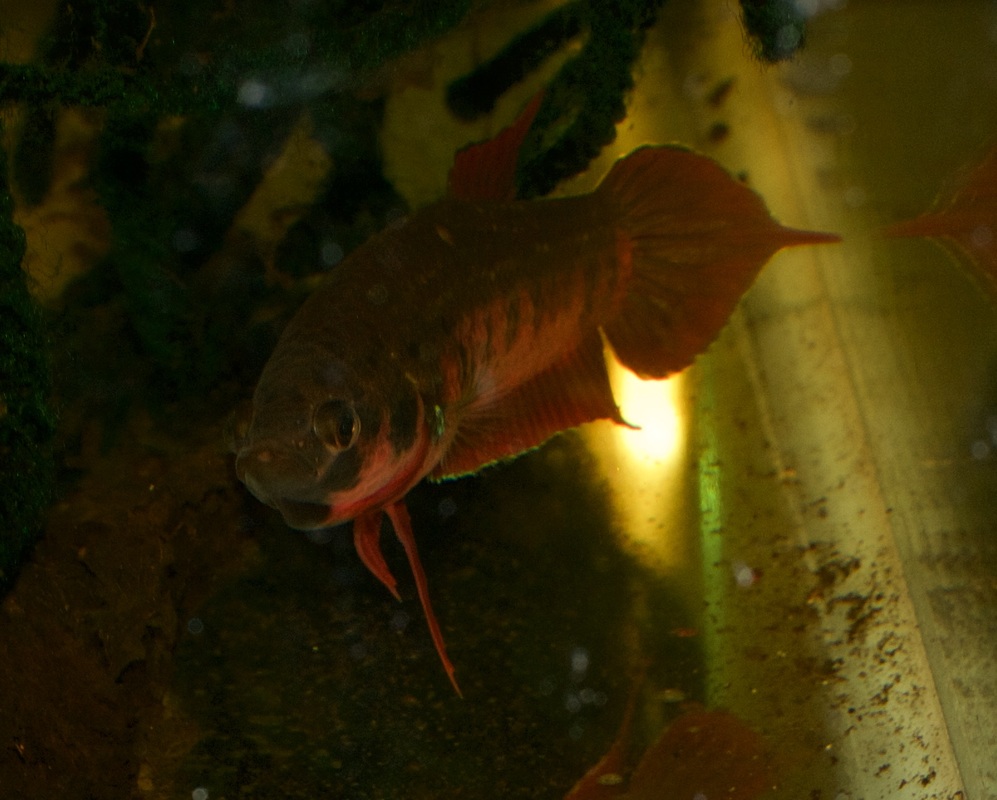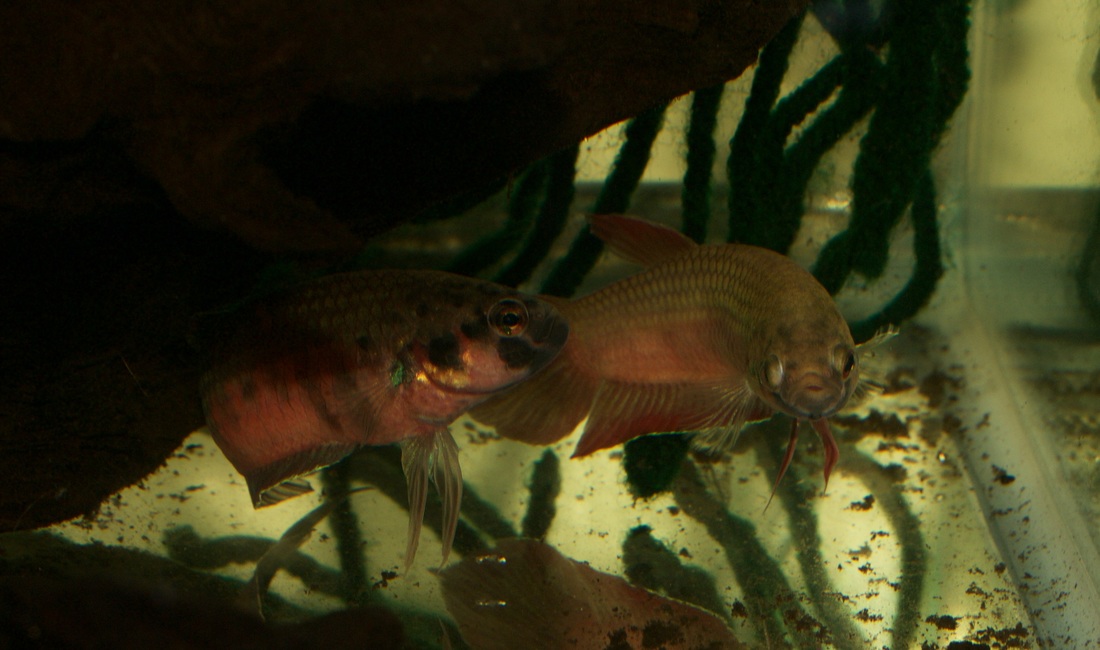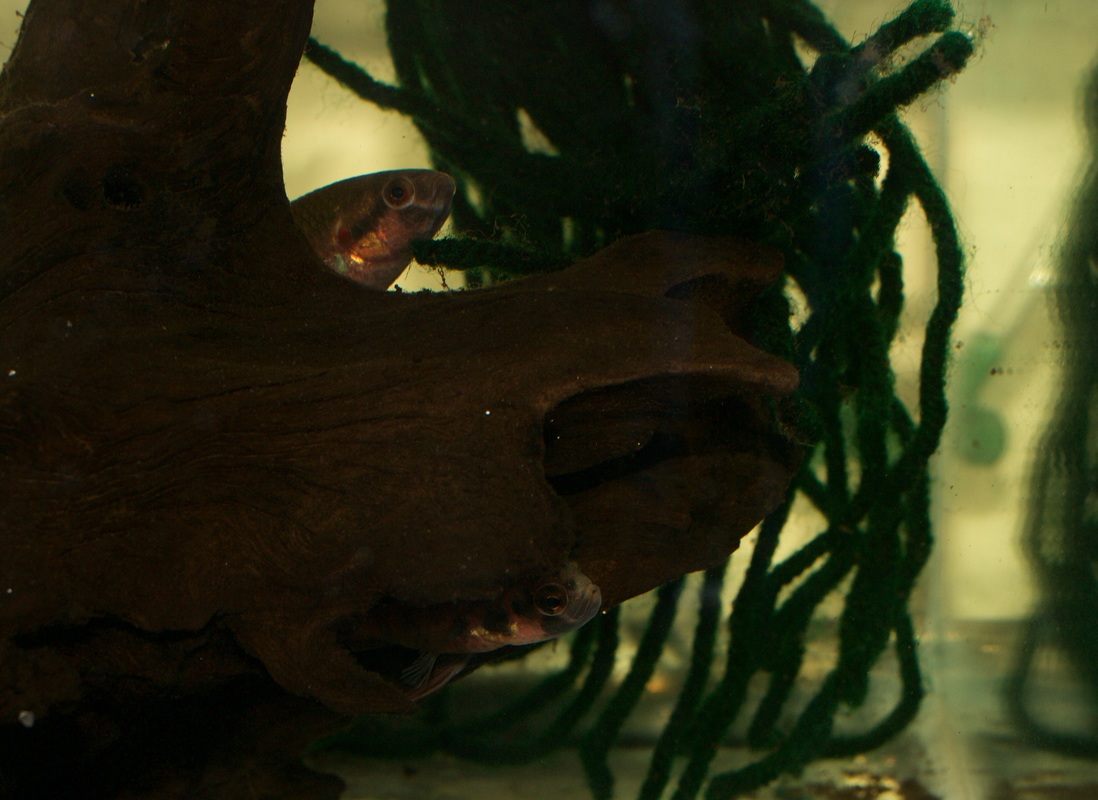Betta rubra
Betta rubra are my favorite mouthbrooding bettas. They are strikingly beautiful and have goofy personalities similar to domestic splendens. I am excited to help spread this beautiful species to fellow hobbyists!
|
The females are pretty fiery and are almost as colorful as the males. She is the one that is quite pushy and initiates spawning. It is important to remember to remove the female as soon as the male is holding. She may force the male to spawn immediately after he releases the fry, which means that he may not eat for months at a time! Mouthbrooding bettas are truly dedicated fathers.
Here are some wonderful sources of information on this species: - Betta rubra Seriously Fish - Betta rubra Redescribed - IBC Species Management Program: Betta rubra |
|
My rubra are in the same set-up as my burdigala - a 6 gallon square tank with lots of IAL and driftwood. These guys do well at room temperature, which for me is 22C (72F). I was keeping them for a while at 26C (80F) and they didn't seem to mind. Mine come right up to the front of the tank to beg for food, and they accept all pellet and live food. |
The male holds for between 10-17 days and then releases the very large fry. The fry are able to take BBS immediately and can cohabitate with the male for quite a long time. I raise the fry with the male and jar the female as if she were a domestic show betta, and she does just fine in there. I am planning on re-introducing the pair to one another after the fry are large enough to move into a grow-out tank.
I am playing with the idea of trying to house burdigala and rubra together in the 20 gallon, but I am a little nervous. The rubra seem to be very peaceful and I don't know how aggressive the burdigala are to other species. I am down to 3 males and 2 female burdigala in a 20 gallon, and even then there are damaging territorial battles. We'll see what happens when I put a few rubra in there with them.
Update 072115
I have decided to end my burdigala project in favor of expanding my rubras. I don't think it would be a good idea to combine the two in a grow out, considering how aggressive the burdigala are. I constantly see fin damage in my burdigala, and although I love them (a lot!) I want to be able to focus on this species.
I am playing with the idea of trying to house burdigala and rubra together in the 20 gallon, but I am a little nervous. The rubra seem to be very peaceful and I don't know how aggressive the burdigala are to other species. I am down to 3 males and 2 female burdigala in a 20 gallon, and even then there are damaging territorial battles. We'll see what happens when I put a few rubra in there with them.
Update 072115
I have decided to end my burdigala project in favor of expanding my rubras. I don't think it would be a good idea to combine the two in a grow out, considering how aggressive the burdigala are. I constantly see fin damage in my burdigala, and although I love them (a lot!) I want to be able to focus on this species.
Reintroducing the female
After clearing the 20 gallon grow out of the burdigala, I moved the juveniles the dad was living with into the larger tank. I think he breathed a sigh of relief! Then I added the female back in and they immediately spawned. Hopefully we see some fry in a couple of weeks :)

